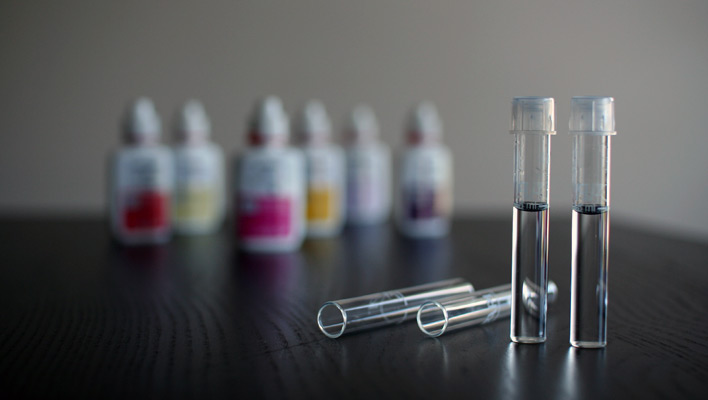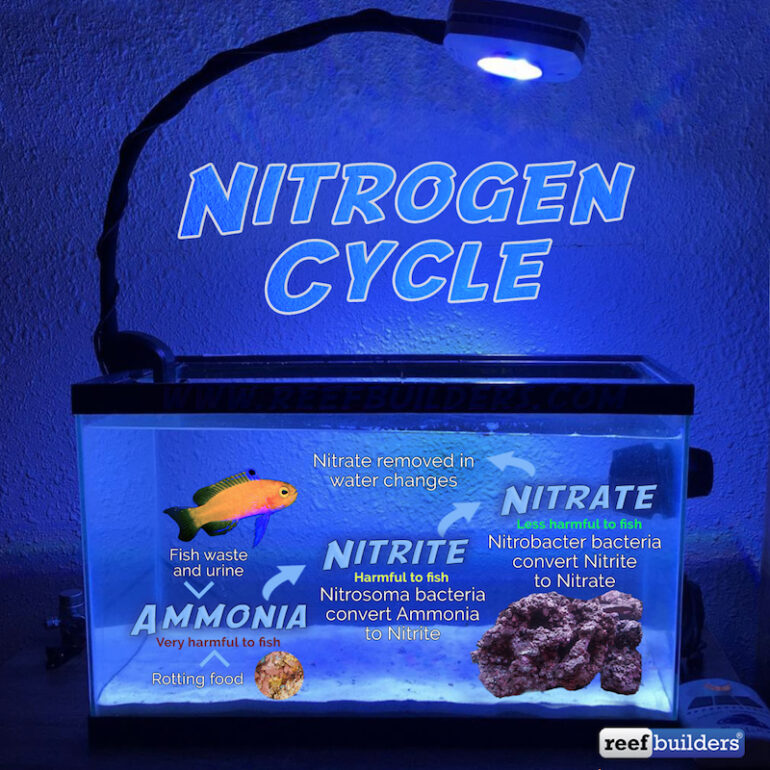Q: I’m a newbie aquarium hobbyist and just starting to set up my first tank, which will be a 40-gallon soft-coral reef system with a few small fish. A friend of mine, who is also fairly new to the hobby but already has an operating tank, has explained the importance of cycling to me. I’m not sure I really grasp all the ins and outs of the process yet, but I do understand that I need to get certain bacteria established in the tank to convert ammonia to less harmful substances. My friend has offered to give me several gallons of water from his tank when he does his next water change in order to help me cycle my system. Will that be enough to get the cycle going in my tank?
-Nathan Kranz
A: First off, welcome to the marine aquarium hobby, and kudos to you for seeking advice on the vital process of cycling during the setup phase of your system rather than rushing out and buying livestock right away like so many newcomers do.
With respect to your friend’s kind offer, the beneficial nitrifying bacteria that convert ammonia to nitrite and then nitrite to nitrate are not present in significant numbers in aquarium water. Rather, they colonize the rockwork, substrate, and other hard surfaces in an aquarium system. So, a better way to kickstart the cycle in your tank would be to ask your friend if he can spare some scoops of substrate material, chunks of rubble, or even a few rocks from his system.

Alternatively, you could ask your friend if he’d be willing to place some good porous rocks in his system (e.g. in the sump if he has one) for several weeks so they can become inoculated with nitrifying bacteria and then transferred to your tank.
Of course, aquascaping your system with purchased live rock, whether fully or partially (some hobbyists create the bulk of their aquascaping with dry rocks and then top off the structure with some good pieces of live rock), will help to get nitrifying bacteria established, in which case you wouldn’t have to impose on your friend at all.
Keep in mind also that introducing nitrifying bacteria in one way or another is only part of the process of getting a new system cycled. You’ll also need an ammonia source to fuel the bacteria. If you aquascape with live rock, there should be enough die-off of encrusting organisms to produce the necessary ammonia, so all you have to do is test your water until both the ammonia and nitrite measurements are zero. On the other hand, if you don’t use live rock, you’ll need to introduce ammonia in a different manner, for example dosing the tank with ammonium chloride. For directions on this process, simply google “fishless cycling,” and you’ll get lots of helpful results from a variety of sources.

Whichever approach you take to cycling, keep in mind that patience will be your greatest asset because the process can take many weeks to complete. And once your system is cycled and it’s safe to begin adding livestock, remember to do so slowly and gradually so your newly established biofilter is able to keep pace.



